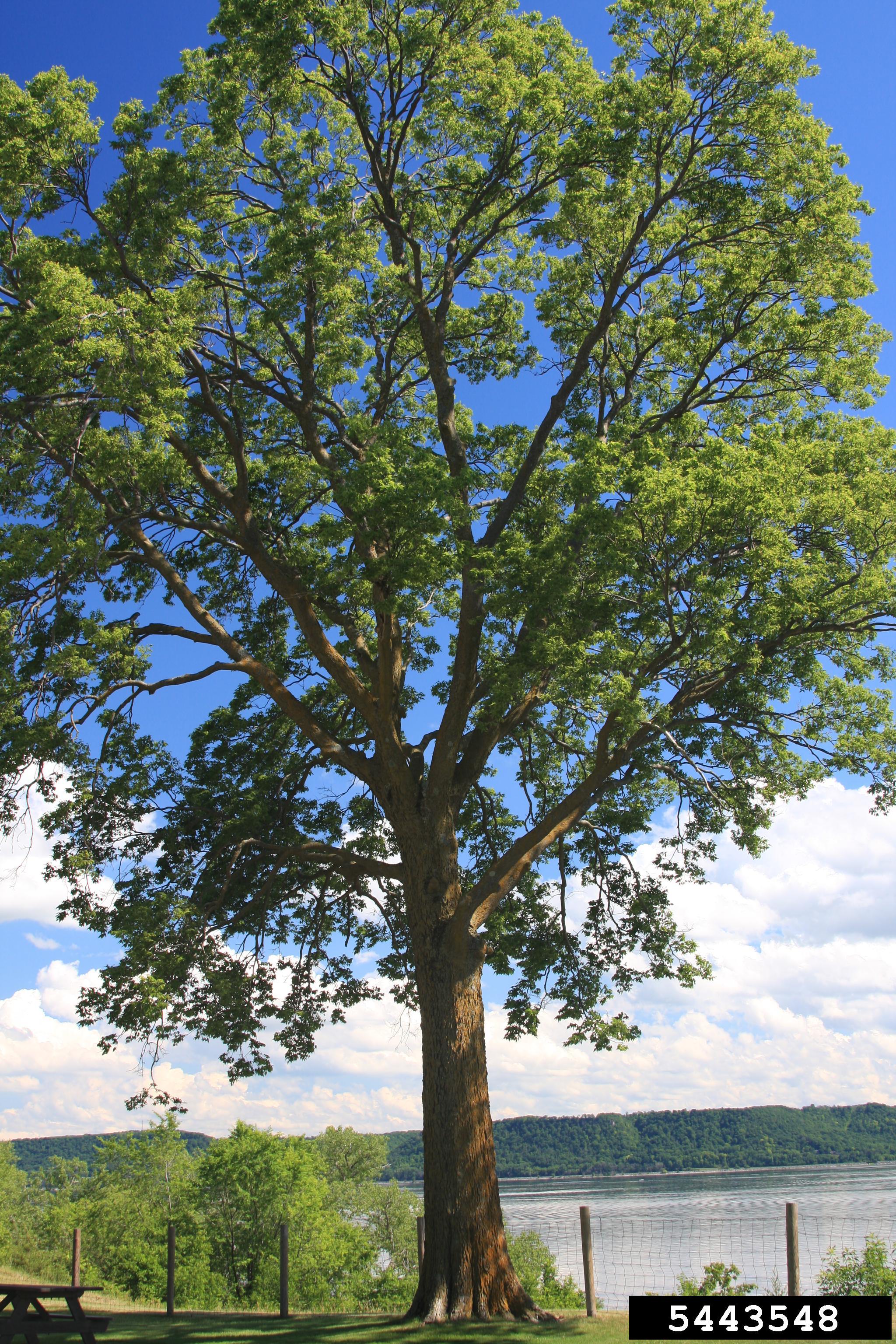Hackberry
 Native Range
Native Range
Celtis occidentalis, or Hackberry, is found growing throughout the state. It prefers a deep moist soil, but is drought resistant on upland sites.
Mature Size
On favorable soils it may reach a height of 60 to 70 feet.
Growth Rate
Growth is slow at first, but after a few years should average 12 to 18 inches annually.
Leaves, Stems and Fruit
The leaves are simple and alternately arranged on the twig. They are 2 1/2 to 4 inches long and 1 1/2 inches wide with small teeth along the leaf edge. Leaf color ranges from light green above to paler green below. Flowering occurs in the spring as leaves begin to emerge with both male and female flowers borne on the same tree. Twigs are gray-brown and slender. Bark is grayish and rough with wart-like projections. The fruit is a dark purple drupe (berry-like), approximately 1/4 inch in diameter which remains on the tree most of the winter.
Use
Windbreaks - Because of its ability to tolerate drought conditions, hackberry is a good choice for windbreak plantings. It can be used as an interior row in a multi-row windbreak if care is taken, especially on poor sites, to prevent overtopping by faster more vigorous trees. It may also be used as a single-row field windbreak.
Timber - Hackberry is a commercial timber species. The wood is used in furniture construction, boxes, crates and pallets.
Wildlife - The fruit provides an excellent source of winter food for a variety of birds including quail, pheasant and turkey. Both whitetail and mule deer browse on twigs and foliage.
Adaptation and Soil
Hackberry has adapted statewide and grows best on deep, moist, fertile soils along streams. However, once established, hackberry will tolerate upland soils.
Spacing
In windbreak plantings, in row spacing ranges from 10 to 18 feet.
Culture
One-year-old, bare root seedlings, 18 to 24 inches tall are used in plantings. Initial survival is good with adequate site preparation and weed control.
Pests
Hackberry is susceptible to a variety of insect attacks that can cause some disfiguration of the leaves and branches, but they are of minor importance.
Soil Information
| Average Height in 20 Yrs: | |
| -Eastern | 28-30 ft. |
| -Central | 26-28 ft. |
| -Western | 26-29 ft. |
| Growth Rate: | Fast |
| Native Species: | Native to Kansas |
| Windbreak Value: | High |
| Wildlife Value: | High |
| Lumber Products: | Yes |
| Fuelwood Products: | Yes |
| Drought Tolerance: | High |
| Texture: | 1,2,3 |
| Soil Saturation: | Medium Tolerance |
| Salinity Tolerance: | Medium Tolerance |
| pH Range: | 4.5-8 |